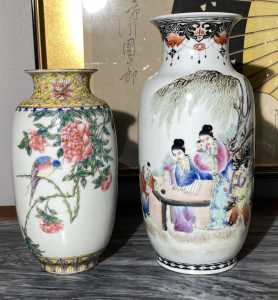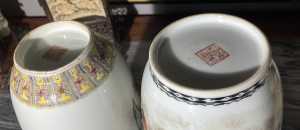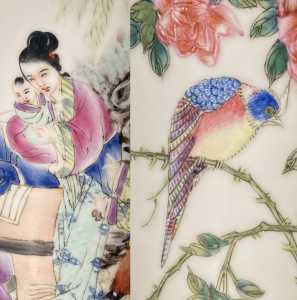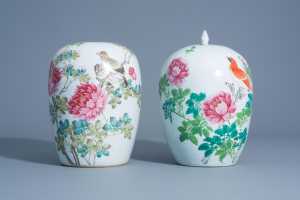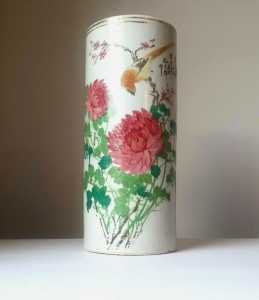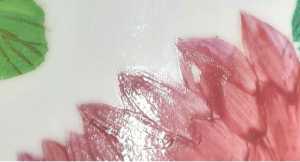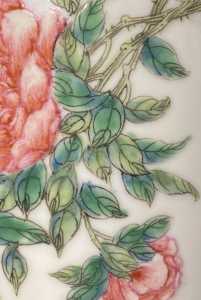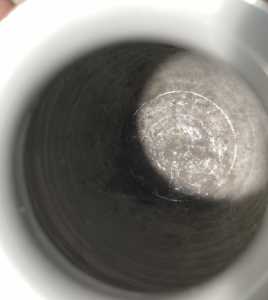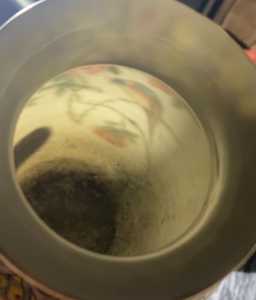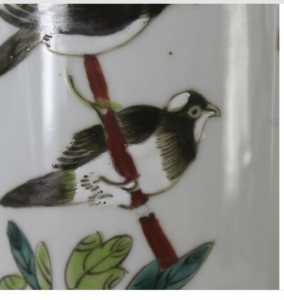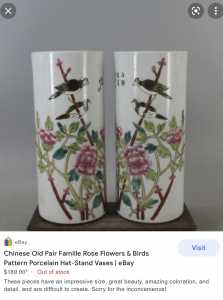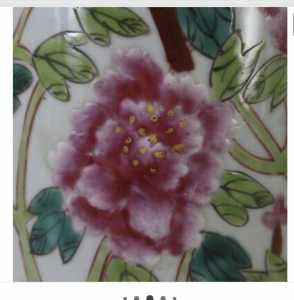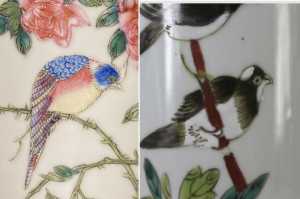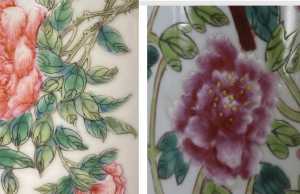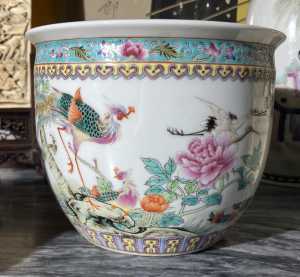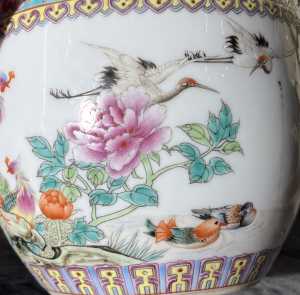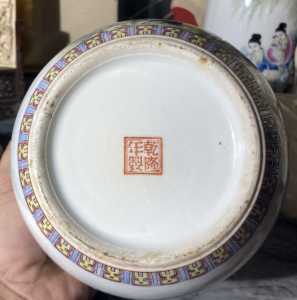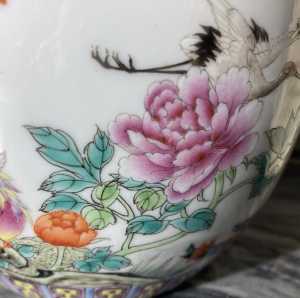The Chinese and Asian Art Forum. For Fans, Collectors and Dealers.
 Basic Rules For the BidAmount Asian Art Forum: Talk about whatever you want. You can even discuss and offer things that are for sale if they are authentic. Maximum image file size per post is 2 MB. Images of 700pxl x 700pxl are optimal if saved at a medium resolution. Be respectful of others and enjoy yourself. Click the YouTube link for a brief tutorial on using the forum. You can also EMBED Videos by cutting and pasting from You-Tube, Vimeo etc.
Basic Rules For the BidAmount Asian Art Forum: Talk about whatever you want. You can even discuss and offer things that are for sale if they are authentic. Maximum image file size per post is 2 MB. Images of 700pxl x 700pxl are optimal if saved at a medium resolution. Be respectful of others and enjoy yourself. Click the YouTube link for a brief tutorial on using the forum. You can also EMBED Videos by cutting and pasting from You-Tube, Vimeo etc.
NOTE: To post an item or add a new post, click open the category title from the FORUM LIST, and CLICK the Blue ADD TOPIC button.
@julia Different than the Qianlong imperial vases? Of course!
I thought you had asked when they started putting borders in a general sense.
What the borders on my egg vase shows is the transition of Guangxu (late Qing) style into the pendant border of the Republic style.
See the blue trim below the yellow traditional scrolling lotus border around the mouth?
The next step was to eliminate the scrolling lotus design all together, and then to put a more elaborated hanging pendant design (the design we all associate with Republic wares).
The gallery that this vase was sold from in the 1970’s was apparently a reputable and knowledgeable seller based upon a few online references I found.
Yet, they still assessed the age as Guangxu.
It just goes to show you how far the knowledge in Chinese ceramics has come over the past 50 years, but also that this specific vase was difficult to assess from early on.
In studying the piece, let me say that I think the artist had ambitious goals of creating a masterful copy of 18th c. fengcai, but they did not have sufficient skill to pull it off.
The concept is there, but the technical skills needed to get the glazes correct were not.
I’d give the artist a solid B grade.
Sorry, I literally meant the border around the base, right at the bottom not the top one. 😊
It's a interesting vase posted by @Greeno107.
I can see why readers may think that it's a later attribute of sorts.
It's not imo guangxu period but a example from the Republic period. Unusual depiction of the bird. Along with a unusual foot/base.
Mark
I’m sorry but I have to still disagree on republic. This example is poorly rendered. The dark outlines are sloppy crossing shaky. If you look at that bird it’s nothing like republic period birds the base looks clearly PROC. The leaves are not depicted in a republic form like they are a cross of different periods. The glaze on the flowers is so thick it looks molded. There was no skill but haste in creating this vase. Sorry just my opinion.
@lotusblack Brian, I think my photos are lending to the difficulty in seeing the earlier age. So, I'm posting additional photos and some comparisons here. But, before speaking speciifically about my vase, I just want to be clear that this discussion is important for both you and me (and everyone else) because to just have an 'opinion' on the dating of a piece without the supporting evidence lends to the same problematic discussion we had regarding Sotheby's assessment of the bowls recently sold as 20th c. vs. mark and period.
So, while my little vase has little value in comparison, the lessons learned from this discussion are still very important. Everyone's opinion matters, but if we are giving advice to others (which we all are), we need to show proof.
Okay, so here is my vase next to a fairly common and widely accepted example of a Republic vase (I just happen to find it at a local shop while in Palm Beach).
and their bottoms...
and a close up comparison of the bird with the woman...
The decorations are quite different, but side by side with a common Republic piece, I don't see any obvious differences in the thickness/darkness of lines on the figural portion of the rendering (ie. bird vs. people). The foot rims looks similarly thinly rendered, and deep. Brian, please show me a PROC foot rim like this, okay?
The most striking similarity is the color of the enamel work. The pink, yellow, blue, and purple are spot on ...they could have come from the same batch of enamel.
Now, as for the unusual manner of the leaves and flower, this has to do with the attempt of the artist to recreate fengcai style. In the late 19th to early 20th c. (Republic), you can see fengcai most commonly used in Qianjian style porcelains...like this:
And, if you look close at the texture of the flowers, while depending on the size and type of flower, you will see the same kind of texture that you see in my small vase's flowers...like this:
This close up is from the sleeve vase being sold on Ebay as 1920's.
As for the leaves looking muddy/dark, I'll give you that they came out dark, but not muddy. What the artist tried to do is recreate the Qinalong manner of falangcai blue & green leaves by putting green enamel first, then a drop of blue enamel on top. It didn't work very well, but look closely and you should be able to see what I'm talking about....
So, Brian, if you have some examples you'd like to share that contradict my examples, please do. You should know me by now....if I'm wrong, I'm happy to admit it. I'm more interested in ensuring we are all on the same and correct page for dating.
@imperialfinegems here you go… inside with light shining through the semi eggshell sides, and another with direct light (as best I could manage).
Here is a very good article that expains the original use of fengcai in the 18th c.
http://www.koh-antique.com/history/falang.htm
Thank you for your additional images of the interior.
I believe it's hand scooped/sculptured rather than by machine as would be seen/used during the PROC.
I would imagine that's its very light also.
Not all genuine republican works are of high standard. It's actually the opposite. Excluding of course the known masters. Copies today are now being produced in larger numbers with exceptional quality.
The invoice dated 1979 if it's the correct one (no reason to believe it isn't by the way) for this vase should in theory lend strong support for said being republican. As far as I am aware republic period vases were not in demand at the said time period of 1979. Quite the opposite actually. Nobody wanted republic or revolutionary wares.
The quality is obviously not high. It's average!
The way that the artist has portrayed said was highly unusual for the period. Perhaps a tribute of sorts to later Qing examples.
Just my opinion/thoughts. Would liked to have been able to handle it. 😊🙏
Mark
@imperialfinegems Mark, thanks, and YES, I don't want anyone to think I think this is a lost treasure of exceptional quality or value.
It is a very unusual design that shows the transformation of wares during the early 20th c. Perhaps from a historical standpoiint, it shouldn't be called 'Republic' but rather early 20th c.
I saw the vase at one my occassional shopping spots a few months ago - I didn't buy it then as I was not impressed by the artistry. However, this time, I looked inside and found all the interesting paperwork, and looked more carefully at the enamel work, so I bought it for educational purposes.
Finding pieces with that show the changing styles of artistry is very rare. Referring back to the articles from Koh Antiques that I referrenced, he mentions the use of fengcai flowers in otherwise typical Kangxi wares for export. They're not considered more valuable or beautiful, but they are rare, and for that reason, they have importance to collectors.
@greeno107 I actually owned a dated piece in the same style as to two ginger jars the famille rose flowers are all leveled not chunky. I didn’t just come to a random opinion my comparison was discussed on another forum. I actually investigated your vase with the Watersilkdragon archives which I believe is a guide to this type of porcelain. Not one example shows a flower or a bird rendered like yours the outlines on your vase is constant with PROC. I actually own a PROC vase with a bird just like yours different colors. But that mark is the last part for me it’s not written correctly at all. All of these things add up. I’ve expanded your vase nothing is fluent look at the boarder it look pieced together stop and go on lines it’s hard for me to believe this is republic after watching Peters video on what should and should not be. PROC did a lot of republic tributes. You yourself said we have to take everything into consideration. When I compare your vase to Dated PROC pieces I can find a trait of your vase with others know examples but when I compare your vase with republic pieces they are not adding up. Don’t mean to put you piece down but criticizing goes both ways. This piece just doesn’t add up and I confused as to why you would purchase something without artist merit. Lol
@lotusblack Show don't tell...let's see what you're comparing my vase to.
@greeno107 here is a pair of hat stands that was sold from Shanghai China on eBay. Same dark outlines same rounded flowers and glaze and the the bird is rendered about the same quality. You know these are not antique or republic same traits PROC
@lotusblack That piece is a modern fake that wishes to be PROC.
Here's a comparison of the two birds and flowers...
Are you really not able to see the difference in the quality of the rendering?
This is a rather finely rendered bowl, nicer in many ways than my vase, but quite different in rendering.
Here is a genuine PROC piece with bird and flower design.
Thanks for visiting "The BidAmount Asian Art Forum | Chinese Art"
If you sell on eBay, or have a shop feel free to post images and descriptions and links.
Check back often for discussion about the latest news in the Chinese art and antique world. Also find out about the latest Asian art auctions at Sotheby's, Christie's, Bonhams and Tajans.
Auction results for: fine porcelain, ceramics, bronze, jade, textiles and scholar's objects. As well as Japanese, Thai, Vietnamese and other Asian cultures.
Thank you,
Peter Combs
Topics and categories on The BidAmount Asian Art Forum | Chinese Art
Kangxi vases, Kangxi dishes and chargers, Kangxi ritual pieces, Kangxi scholar's objects, Qianlong famille rose, Qianlong enamels, Qianlong period paintings, Qianlong Emporer's court, Fine porcelain of the Yongzheng period. Chinese imperial art, Ming porcelain including Jiajing, Wanli, Xuande, Chenghua as well as Ming jades and bronzes.
The BidAmount Asian Art Forum | Chinese Art
A free Asian art discussion board and Asian art message board for dealers and collectors of art and antiques from China, Japan, Korea, Thailand, Cambodia, Vietnam and the rest of Asia. Linked to all of the BidAmount Asian art reference areas, with videos from plcombs Asian Art and Bidamount on YouTube. Sign up also for the weekly BidAmount newsletter and catalogs of active eBay listing of Chinese porcelain, bronze, jades, robes, and paintings.
The art of calligraphy - and for the ancient Chinese it certainly was an art - aimed to demonstrate superior control and skill using brush and ink. Calligraphy established itself as one of the major Chinese art forms during the Han dynasty (206 BCE - 220 CE), and for two millennia after, all educated men were expected to be proficient at it.
The Museum’s collections of Asian art span nearly five millennia and encompass the cultures of China, the Himalayas, India, Japan, Korea, and Southeast Asia. In 2007, the Museum launched an initiative to create dedicated galleries for the collection, beginning with a gallery for the arts of Korea ...
Chinese art is full of symbolism, in that artists typically seek to depict some aspect of a totality of which they are intuitively aware.
China Online Museum is the finest online museum of Chinese art. It features Chinese calligraphy, painting, ceramics, bronzes, carving, and other artworks.
Chinese Ceramics & Works of Art. Overview Upcoming auctions Contacts Auction results ... Christie’s sales of Chinese ceramics and works of art showcase centuries of Chinese history. Held throughout the year in London, New York, Paris and Hong Kong, they attract a wide audience of collectors and connoisseurs vying for pieces as diverse as ...
Explore Asian Art Week. Contact the Specialist Department. Chinese Paintings ... Senior Specialist, Head of Sale. [email protected]. Tel:+1 212 641 5760. Bid in-person or online for the upcoming auction:Fine Chinese Paintings on 10 September 2019 at New York. Bid in-person or online for the upcoming auction:Fine Chinese Paintings on 10 ...
Discover an abundance of must-see art from all corners of a vast continent at Christie’s NY Asian Art Week. From contemporary classical and Chinese paintings to works with exemplary provenance from the Art Institute of Chicago, our Rockefeller Paza galleries will be full of ancient treasures and contemporary masterworks in a salute to the vibrant arts of Asia.
Sold to benefit The Art Institute of Chicago’s Asian Art Acquisition Fund, the sale features 84 lots with a focus on Ming and Qing porcelains, and offers a rare insight into the taste for collecting Chinese ceramics and works of art in the Midwest from the end of the 19th century through the 1980s. Highlights include two Wanli wucai garlic-head vases, a Qianlong mark and period, blue and ...
Specialist, Chinese Paintings, Christie's London Dr Malcolm McNeill is a Specialist in Chinese Paintings at Christie’s, based in London. He previously worked as an assistant curator of the Chinese collections and the Victoria and Albert Museum in London, as a researcher at the British Museum, and as a translator and tour guide at the National Palace Museum in Taipei.
The Christie's Education 2020 Conference: The Chinese Art Market 18 Jun 2019 Christie’s Education is delighted to announce our first international academic conference in Asia which will take place in Hong Kong from 26-27 November 2020 at the Hong Kong Convention and Exhibition Centre and will run in parallel with Christie’s Hong Kong Autumn Auctions.
The summer Chinese Art sale in Hong Kong will feature works of art from several private collections, including Qing porcelains and textile from the collection of the legendary Chinese art dealer A. W. Bahr (1877–1959), fine gilt bronze Buddhist sculptures from an old Hong Kong collection, an East Asian collection of Qing dynasty wine cups and jades, and a Japanese collection of Song ceramics ...
Sotheby's Chinese Works of Art Department holds two auctions each year in London, New York, Hong Kong and Paris.
Chinese Art - View Auction details, bid, buy and collect the various artworks at Sothebys Art Auction House.
With more than 340 Chinese works of art dating from the Neolithic to the Republic periods, highlights of this sale include a selection of Qing Imperial monochromes from the collection of Arnold and Blema Steinberg, early ceramics from the Art Institute of Chicago and Chinese porcelain and works of art from the collection of Henry Arnhold.
Results: Sotheby's Asia Week achieved $52.4 million in six strong auctions, exceeding pre-sale estimates. With 76.5% of lots sold and 60.3% of lots surpassing high estimates, the Asian art sales at Sotheby's indicate continued collector interest in the finest works of art from China, India and and the Himalayas.
Today's sale of Important Chinese Art will proceed as planned with sessions at 10 AM and 2 PM EDT. Sotheby's will be monitoring the weather conditions throughout the day and will be available to coordinate alternative bidding options should conditions make it difficult for clients to attend the auction in person.
Bonhams Chinese Art department is renowned for offering the finest works of art representing the richness and breadth of China's artistic heritage, particularly Imperial porcelain, white and spinach green jades, cloisonné and Buddhist art. Specialised international auctions are held globally, including London, Hong Kong and San Francisco.
Bonhams : Chinese Works of Art We use cookies to remember choices you make on functionality and personal features to enhance your experience to our site. By continuing to use our site you consent to the use of cookies. Please refer to our privacy and cookie policies for more information.
Bonhams Fine Art Auctioneers & Valuers: auctioneers of art, pictures, collectables and motor cars. We use cookies to remember choices you make on functionality and personal features to enhance your experience to our site. By continuing to use our site you consent to the use of cookies. ... Chinese Art (US) General enquiries
Bonhams : Fine Chinese Art We use cookies to remember choices you make on functionality and personal features to enhance your experience to our site. By continuing to use our site you consent to the use of cookies. Please refer to our privacy and cookie policies for more information.
Bonhams Fine Art Auctioneers & Valuers: auctioneers of art, pictures, collectables and motor cars Bonhams : Asian Art We use cookies to remember choices you make on functionality and personal features to enhance your experience to our site.
Bonhams are international auctioneers of fine Chinese and Japanese art. We specialise in rare Imperial and Export Chinese ceramics and works of art, as well as Japanese ceramics, fine and decorative works of art from the Neolithic Period to the 20th century. View on map
Bonhams Fine Art Auctioneers & Valuers: auctioneers of art, pictures, collectables and motor cars. We use cookies to remember choices you make on functionality and personal features to enhance your experience to our site. By continuing to use our site you consent to the use of cookies. ... Asian Art Bonhams. Work. 22 Queen St.
